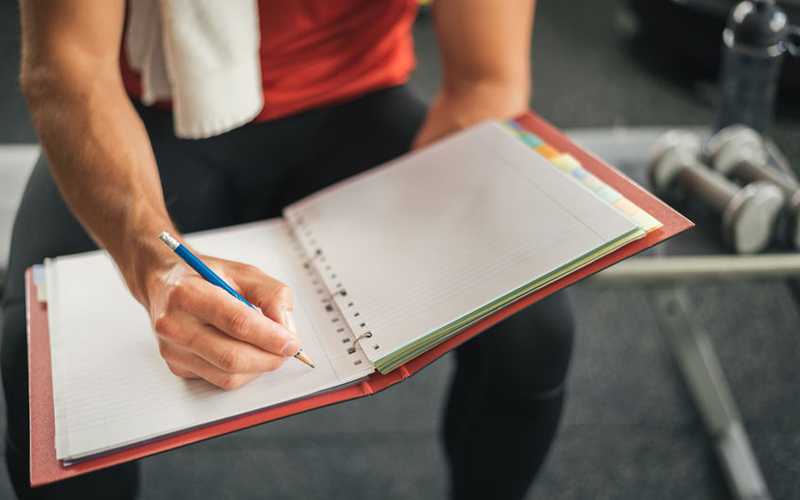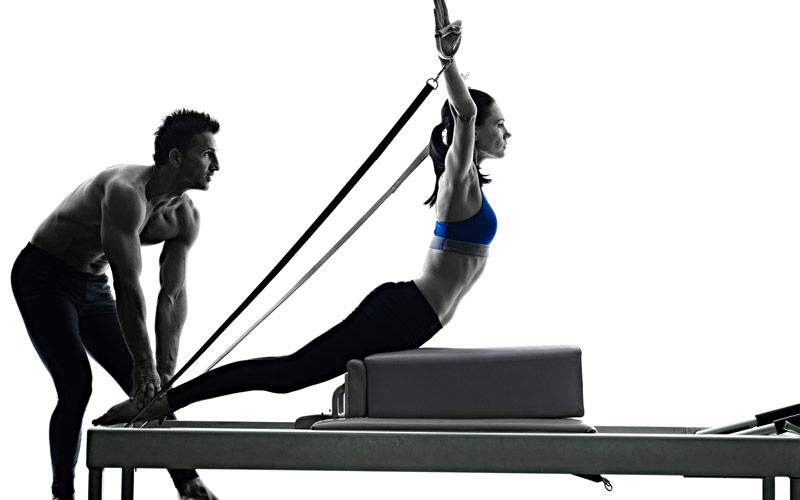September 2017 NewsBlast | Article 1
17 Sep 2017 / NAFCNAFC NewsBlast - September 2017 | Article 1
Filling Slow Periods in the Trainer's Calendar
Written by: FHMatch
 Copyright: emiliozv / 123RF Stock Photo
Copyright: emiliozv / 123RF Stock Photo
5 Ideas for Filling Slow Periods in the Personal Trainer's Calendar
With holidays and family get-togethers, it’s hard to keep clients committed year round. Things may pick up in the spring as clients work on their “beach body”, only to slow again during the summer months. Trying to fill those slow periods on the calendar is a common problem fitness trainers encounter throughout the year. Consider the following 5 creative ways you can fill your downtime, while also growing your business at the same time.
Create an online training system
With all its unpredictability, life has a way of limiting many client’s abilities to be consistent. From moving to having kids, the reasons will vary. A great way to keep up with clients that have moved on – and fill slow periods on your calendar – is to create an online training system. Online fitness offers an even more comprehensive service. You can create great workout programs for your clients with meal plans that feature superior information. During slow periods in one-on-one personal training, focus on creating and developing your online fitness courses and building online presence through social media platforms.
Offer specials or discounts
Since the holidays are often a slow period for certified personal trainers, try offering holiday specials. Give the gift of fitness by offering gift certificates to your clients to be redeemed by their friends and family. You can also offer discounts to your clients. For example, you can offer a 25 percent discount for a package of 10, or a free session with a purchase of 10 sessions.
Write blog posts
During slow stretches, you can take advantage of the extra time you have by writing as many blog posts as possible. Blog posts are a great way to build your fitness website’s SEO; thus, ensuring that your site shows up in Google more. In addition, you can use your blog as a way to organize all of your research and share health tips. Each article you write has value; they will benefit those who know less than you and wish to learn what you know. In the end, writing your blog posts is not only a productive use of downtime, but it will also attract new clients.
Offer 30-minute sessions
Most fitness trainers schedule 60-minute sessions with their clients and groups. This amount of time allows them to do everything they want to fit in with that particular client that day (warm-up, training, stretching, mobility work, cool down, etc). For the client, the more time they have each session to work towards their goal the better results they will see. However, during holidays and other slow periods, you should consider implementing 30-minute sessions for clients. It isn’t uncommon for 60-minute clients to cancel or take a “break” during the holidays. Before they do, offer a 30-minute session that will keep them accountable to their goals, while also allowing more time for their festivities.
Sign up for FHMatch
FHMatch.com is a great tool for personal trainers to grow their client base and save time managing their business. FHMatch gives you and your prospective clients a central place to connect. Creating a profile is free and opens yourself up to thousands of clients looking for the services you offer, in your area. Your profile will also allow you to be seen on Google, Yahoo and Bing for your services. Consumers can look through your profile, assess qualifications, follow, message and book you right from your profile. Save time managing your schedule and start booking clients with a Premium profile. Other features include analytics, ratings, invoicing and 3rd party payments. You can use code NAFC20 to take 20% off a Premium membership.
Don’t let slow weeks, months, or holiday seasons worry you. While it can be stressful, slow periods can be used as opportunities to encourage current clients, reach new ones and spend time growing your business.
Written by: FHMatch
August 2017 NewsBlast | Article 3
16 Aug 2017 / NAFCNAFC NewsBlast - August 2017 | Ed 2
Making Yoga and Pilates Accessible
Written by: Tammy LeBoss, The FitPro Foodie
References Credits: NAFC Foundations of Movement Mat Pilates, NAFC Yoga200™
 Copyright: Ostill / 123RF Stock Photo
Copyright: Ostill / 123RF Stock Photo
How to Bend Safely and Effectively
The human body is designed to move. In daily life activities, we bend, reach, grab, pull, twist and turn. In modern society, most spend much of their day seated with the spine rounded and front body compressed. Driving cars, typing, texting, writing, eating and many other modern tasks cause shoulders to round forward and the upper back to round. Over time, this can lead to kyphosis.
Kyphosis is identified by an excessive rounding (hunchback) of the spine in the thoracic region and a forward head carriage. Backbends assist in slowing, stopping and reversing kyphosis. Backbends, when performed correctly, can help improve posture by strengthening the muscles of the spine and shoulders.
Backbends can be energizing and uplifting. While they can be beneficial for enhancing the health of the spine, participants with certain conditions should avoid backbends. Common misalignments involve compressing the lower back by overarching the lumbar spine, and/or splaying the knees and feet outward (thighs externally rotated).
Backbends should be entered and exited methodically, with care and caution. Very flexible participants may tend to “throw” themselves into deep backbends, exposing them to greater risk of injury. On the contrary, stiffer participants may try to force themselves into a deep backbend that they are not yet ready for. (NAFC Yoga200™).
Pro Tip: Follow deep backbends with a soft transitional pose, such as a Spinal Twist or Happy Baby, before adding counter-poses such as Supine or Seated Forward Fold.
Learn more about how to safely and effectively enter and exit deep backbends. Always apply safe sequencing and be prepared to offer modifications for Locust, Cobra, Upward Facing Dog, Bow, Camel, Wheel poses during yoga, as well as Bridge and Swan in Pilates. With NAFC’s Foundation of Movement and Yoga200™, we’ve got your back!
Written by: Tammy LeBoss, The FitPro Foodie
August 2017 NewsBlast | Article 2
16 Aug 2017 / NAFCNAFC NewsBlast - August 2017 | Ed 2
Making Yoga and Pilates Accessible
Written by: Tammy LeBoss, The FitPro Foodie
References Credits: NAFC Foundations of Movement Mat Pilates, NAFC Yoga200™
 Copyright: Ostill / 123RF Stock Photo
Copyright: Ostill / 123RF Stock Photo
1 Mindset Shift That Could Save Your Low Back
Speaking of back…did you know?
Studies show that approximately 8 out of 10 Americans will experience back problems at some point in their lifetimes. According to the American Chiropractic Association, chronic low back pain is on the rise. Reports say, more than half of Americans who experience low back pain spend the majority of their workday sitting.
Prevent low back issues applying this idea: During exercise, one way to avoid low back pain involves knowing how and when to apply counter poses. This applies when teaching yoga or Pilates, as well as during other forms of strength training.
Pro Tip: To keep your students safe and balanced, speak to the idea of “use everything and overuse nothing”.
To help the body find balance, train it fully yet functionally. And, drop the “no pain, no gain” mindset. Avoid doing 100 reps of the same movement as it may cause muscular imbalances or over development of a certain muscle group. Remember, every part of the body needs equal parts mobility and stability in order to maintain good health.
For example, when doing lots of back-bending, make sure to also do equal amounts of forward folding, as a counter pose. To avoid low back issues, add a gentle twist in the mix as well. Using counter poses can help to bring the body back into its natural state of balance. When nothing is overworked and everything is worked, our bodies are stronger and more functional. Introducing counter poses can also help to keep your students interested and engaged while transitioning from one exercise to another.
Trainers, Yoga and Pilates instructors, how do you stay balanced on and off the mat? What activities engage you when you’re away from the gym? We’d love to hear about how you’re applying the idea of balance in the many areas of your lives. Keep sharing your knowledge and keep learning. The fitness industry is getting more sophisticated, and the world needs smart trainers like you!
Written by: Tammy LeBoss, The FitPro Foodie
begin ... prev 4 5 6 7 8 9 10 11 12 13 14 15 16

